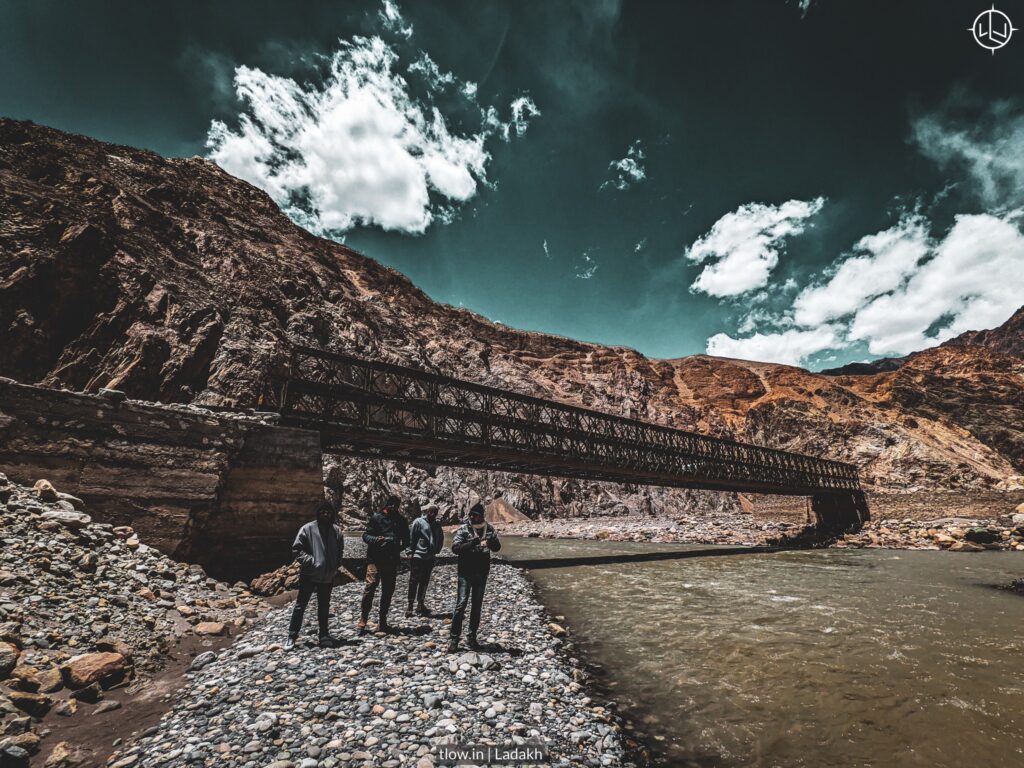
Shyok River in Ladakh: An awesome tributary of the Indus
The Shyok River is a major tributary of the Indus River in the Indian-administered Union Territory of Ladakh and Pakistani-administered Gilgit-Baltistan. Originating from the Rimo Glacier in the Karakoram Range, the Shyok River flows through the remote and picturesque landscapes of Ladakh, passing through the towns of Diskit, Nyoma, and Dha Hanu before joining the Indus River near the border of India and Pakistan.
Table of Contents
The Shyok River is approximately 270 km (168 miles) long and is known for its turquoise blue waters, rugged terrain, and natural beauty. The river supports a unique ecosystem, with several species of fish, including the endangered Ladakh Trout, found in its waters.
1. Location of Shyok River:
The River is a tributary of the Indus River and flows through the Ladakh region of the union territory of Ladakh, India.
– The River originates from the Shyok Glacier in the Karakoram Range, near the India-China border.
– It flows through the Nubra Valley, a high-altitude desert region in Ladakh.
For the TLOW backpacking experience click on this link
– The river flows through rugged, mountainous terrain, with steep valleys and gorges.
– The landscape around the Shyok River is characterized by barren, arid mountains and glaciers.
2. Origin:
It originates from the Shyok Glacier in the Karakoram Range near the India-China border.
3. Length:
The Shyok River is approximately 430 km (270 miles) long.
4. Flows through:
The River flows through the Nubra Valley and joins the Indus River near Skardu in Pakistan.
– The Shyok River valley provides an important road connection, with the Shyok River Road running along its banks.
– This road connects Ladakh to the rest of India and is a crucial transportation link, especially during the summer months.

– The river and its tributaries support agriculture and pastoralism in the Nubra Valley.
– The river and surrounding areas are home to diverse wildlife, including endangered species like the Ladakh urial and Tibetan antelope.
5. Glacial River:
It is a glacial river, fed by the melting of the Shyok Glacier and other glaciers in the Karakoram Range.
6. Challenging Terrain:
The River flows through rugged, mountainous terrain in Ladakh, making it a challenging river for navigation and transportation.
– The River is prone to flash floods and glacial lake outburst floods, posing risks to local communities and infrastructure.
– The harsh, remote terrain makes the river and its surroundings difficult to access and monitor.
– Climate change is affecting the glaciers and hydrology of the region, which may impact the flow and behavior of the River in the future.

7. Connectivity:
The Shyok River valley provides an important road connection between Ladakh and the rest of India, with the Shyok River Road running along its banks.
8. Ecological Importance:
The Shyok River and its tributaries support a diverse ecosystem, including wildlife such as the endangered Ladakh urial and Tibetan antelope.
9. Hydropower Potential:
The Shyok River has the potential for hydropower development, though this is limited due to the challenging terrain and remote location.
– The Shyok River has the potential for hydropower development, but this is limited by the challenging terrain and remote location.
– Several small-scale hydropower projects have been developed along the river, but large-scale projects face significant logistical and environmental challenges.

The Shyok River Valley is home to several historical and cultural sites, such as the Diskit Monastery, the oldest monastery in the Nubra Valley, and the ancient ruins of the Khapalo Fort. The valley also offers various adventure activities, such as river rafting, trekking, and camping, attracting tourists and adventure enthusiasts from around the world.
Some of the notable places to visit along the Shyok River include:
a. Diskit Monastery: A 14th-century Buddhist monastery, Diskit Monastery is the largest and most important monastery in the Nubra Valley.
b. Panamik Village: A small village located near the border of India and Pakistan, Panamik is known for its hot springs and scenic beauty.
c. Turtuk Village: A picturesque village in the Baltistan region, Turtuk is known for its unique culture, architecture, and beautiful landscapes.

d. Khapalo Fort: An ancient fort located near the Shyok River, Khapalo Fort is believed to have been built in the 17th century and offers a glimpse into the region’s history.
e. Hunder Village: A popular tourist destination in the Nubra Valley, Hunder is known for its sand dunes, double-humped Bactrian camels, and scenic beauty.
f. Pangong Tso Lake: A high-altitude lake situated near the border of India and China, Pangong Tso is known for its stunning beauty and has been featured in several Bollywood movies.
g. Chumathang Hot Springs: A series of hot springs located on the banks of the Indus River, Chumathang is known for its nature scene.











